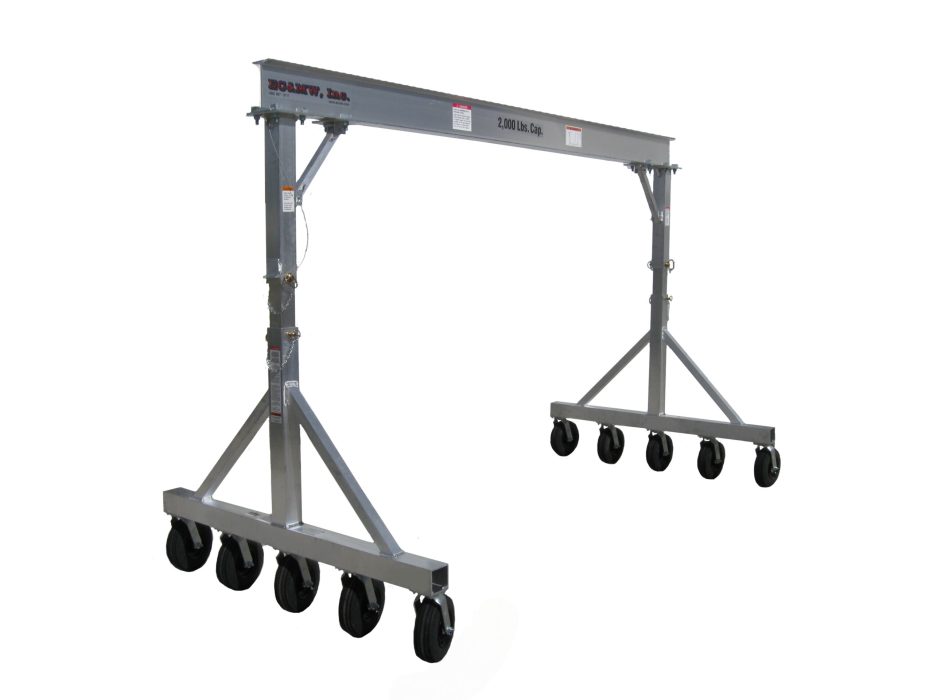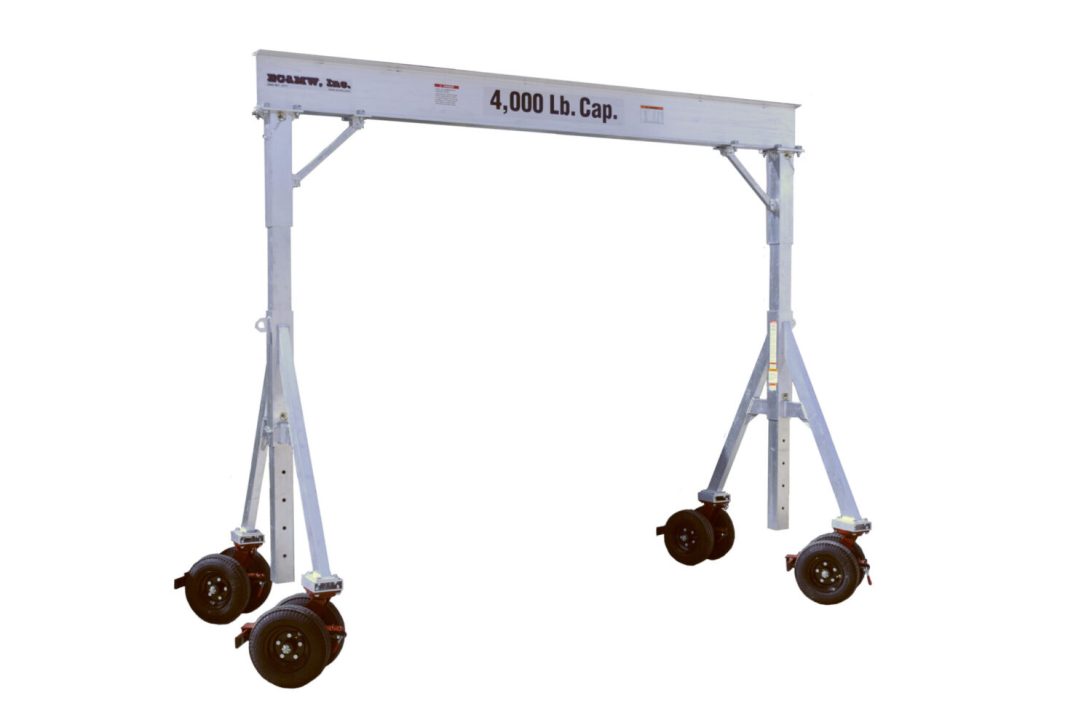Pneumatic Tire Gantry
Air Tire Gantry Cranes
Aluminum Pneumatic Tire Gantry Cranes
EC&MW’s Air tire gantry cranes, also referred to as Pneumatic tire gantry, are manufactured to the same high standards as all of our portable gantry cranes. Although we were not the first to invent the air tire gantry, we were the first in 1998 to formulate and produce lightweight aluminum gantries in production models. Several years later, other companies caught on to their unique asset to the moving and rigging industry. Their original design was for moving and relocating rooftop HVAC systems. When properly used, customers have the ability to minimize or eliminate roof damage. Later on, we evolved the concept to our Animal Rescue portable gantry cranes, as well as Custom Gantry Models like the one shown above, designed for UC Davis of California.
Request a FREE Quote
Uses:
- Construction sites where minimal uneven terrain is possible – With larger diameter air tires, they are forgiving on a packed soil terrain. They are not suitable for sand, gravel, and loosely packed rock situations.
- Highly delicate electronic instruments – Air tires provide an unparalleled cushioning effect that really no other caster can provide.
- Rooftop HVAC Installations
The History of our Pneumatic Gantry Model
Our sister company, Hospital Rigging Supply, originally came out with our first Pneumatic Tire Caster Gantry in 1998. Others have again followed in our footsteps. Our pneumatic caster concept is in several models of gantries that we manufacture. From our Animal Rescue to Fall Arrest and All-Terrain model gantries. Now! Which one is better for your application? Below we have listed pros and cons between models.
A-Frame Gantries and T-Frame Gantries in 500, 1,000 and 2,000 lb. capacities Models
- Multiple casters (8 or 10) over a 60″ to 68″ long base provides less concentration of load with a longer surface area.
- For a roof application, your load could span several roof trusses at once.
- Shorter base height for hatchways and transportation.
- Better mobility on slightly uneven surfaces.
- Lighter overall weight.
- Standard with four position locking caster on (4) outside casters.
- Slightly easier assembly.
- Easier height adjustment on “smaller models“.
- Uses a 10.5″ diameter tire.
- Easier reversing of direction.
- Higher lifting ability on tallest models.
- Less caster maintenance.
- Easier height adjustments on larger model sizes.
- Standard with four position locking pins on all (4) legs.
- Removable adapter plate allows for the use of our standard polyurethane casters. An additional cost does apply for Polyurethane casters.
- Uses an 8″ & 10.5″ diameter tire.
Cons of this Model
- More effort needed to reverse direction.
- Polyurethane casters not available.
- Heavier overall weight
- More difficult height adjustment
Cons of this Model
- Concentrated load on (4) points. Although there are (8) tires total the footprint could be considered smaller.
- Taller main frame is harder to transport.
- Harder mobility on less even surfaces.
- Use of Polyurethane casters will lesson height in lifting ability.
3,000 & 4,000 lb. cap. models
Pros of this Model
Pros of this Model
- Multiple casters (8) over a 78″ long base provides less concentration of load with a longer surface area.
- For a roof application, your load could be span several roof trusses at once.
- Shorter base height for transportation.
- Better mobility on slightly uneven surfaces.
- Standard with four position locking caster on (4) outside casters.
- Uses a 16″ diameter tire
- Easier reversing of direction.
- Easier height adjustments.
- Standard with four position locking pins on all (4) legs.
- Removable adapter plate allows for the use of our standard polyurethane casters. An additional cost does apply for Polyurethane casters.
- Uses a 16″ diameter tire.
- Lighter overall weight.
Cons of this Model
Cons of this Model
- More effort needed to reverse direction.
- Polyurethane casters not available.
- Heavier overall weight
- More difficult height adjustment
- Concentrated load on (4) points. Although there are (8) tires total the footprint could be considered smaller.
- Taller main frame is harder to transport.
- Harder mobility on less even surfaces.
- Use of Polyurethane casters will lesson height in lifting ability.



